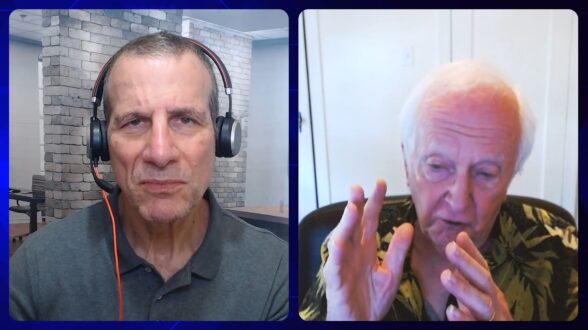In a recent interview available on YouTube, Jan Ozer sat down with Fred Dawson, an industry journalist and principal at Dawson Communications, to discuss his whitepaper for Motion Spell titled “GPAC: Ultra Media Technology Breaks Barriers to Next Gen Streaming.” Released in conjunction with GPAC’s 21st anniversary, the whitepaper illuminates how GPAC UltraMedia technology is setting new benchmarks for cost efficiency, operational performance, and future-proofing in the streaming industry. Below are the key takeaways from their discussion.
Major Points Covered in the Interview:
• [00:00:00] Introduction to GPAC Technology:
Dawson explains that GPAC, an open-source packaging and encoding solution, is designed to help companies optimize their media workflows by breaking down technical and cost barriers. For over two decades, GPAC has been a behind-the-scenes powerhouse in the streaming industry.
• [00:00:52] Target Audience for the Whitepaper:
The whitepaper is primarily aimed at engineers and decision-makers within the streaming industry. It also targets companies seeking cost-effective, open-source alternatives to proprietary systems.
• [00:02:23] What GPAC UltraMedia Does and How It Works:
GPAC UltraMedia enables companies to package and encode media content efficiently. Its open-source nature means there are no usage fees for the core technology, making it highly attractive to businesses looking to reduce costs while maintaining high-performance standards. GPAC’s modular architecture provides flexibility and scalability to meet diverse streaming needs.
• [00:07:24] Cost Considerations and How GPAC Addresses Them:
Dawson outlines the significant cost savings that GPAC UltraMedia offers. Being an open-source solution eliminates the hefty licensing fees associated with proprietary systems. This is particularly valuable for companies looking to optimize storage, distribution, and live streaming costs without sacrificing performance.
• [00:10:26] Adoption by Industry Leaders Like Netflix and Instagram:
The whitepaper highlights real-world examples, including Netflix, Instagram, and Synamedia/Quortex, which have integrated GPAC into their workflows. These industry leaders have leveraged GPAC to streamline operations, reduce costs, and future-proof their streaming services.
• [00:14:02] GPAC’s Modular, Filter-Based Architecture:
GPAC’s architecture is designed to be flexible and modular, allowing companies to adapt the technology to their specific needs. This provides a competitive advantage for businesses that require custom solutions for their media operations, improving both scalability and operational efficiency.
• [00:18:25] Latency Reduction in Streaming, Especially for Sports:
A major point of the discussion was how GPAC UltraMedia helps reduce latency, a critical factor for live events such as sports broadcasts. By improving encoding and packaging efficiency, GPAC ensures that viewers receive near-real-time content, enhancing the live streaming experience.
• [00:24:25] Personalization Features Enabled by GPAC:
Dawson also touches on GPAC’s ability to enable personalized content delivery, such as customized sports scores or fantasy football updates. This level of personalization is increasingly important in streaming services and GPAC is well-equipped to support it.
• [00:26:22] GPAC’s Role in Advanced Technologies Like XR and Spatial Computing:
The conversation concludes with a discussion on GPAC’s potential in powering next-gen technologies like Extended Reality (XR) and spatial computing. GPAC UltraMedia is not just a tool for today’s streaming but also enables future innovations in immersive media environments.
Conclusion
The interview highlights how GPAC UltraMedia technology provides a flexible, cost-effective solution to many of the challenges facing the streaming industry today. Its combination of open-source accessibility, modular architecture, and real-world applications with industry leaders like Netflix and Instagram positions it as a key player in the future of streaming. Anyone interested in learning more about GPAC UltraMedia and its potential can download the whitepaper discussed in the interview from Motion Spell’s website.
 Streaming Learning Center Where Streaming Professionals Learn to Excel
Streaming Learning Center Where Streaming Professionals Learn to Excel









